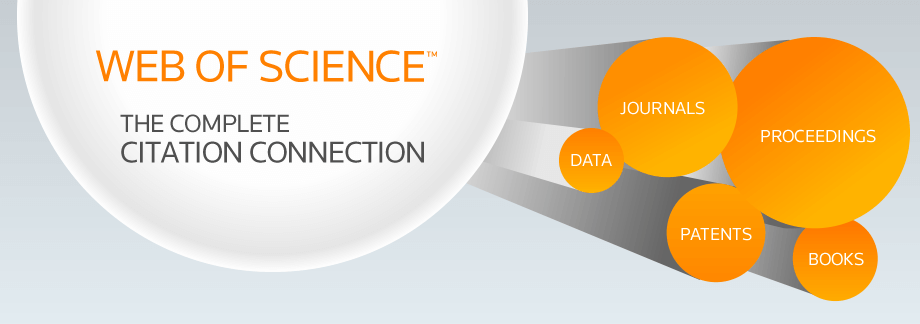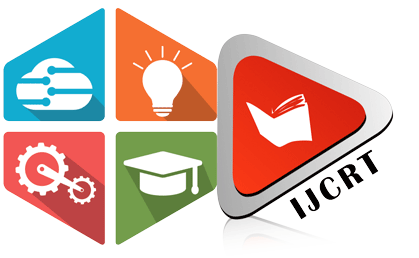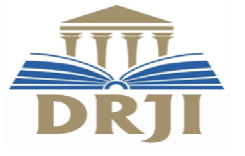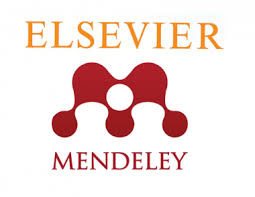INTERNATIONAL JOURNAL OF CREATIVE RESEARCH THOUGHTS - IJCRT (IJCRT.ORG)
International Peer Reviewed & Refereed Journals, Open Access Journal
IJCRT Peer-Reviewed (Refereed) Journal as Per New UGC Rules.
ISSN Approved Journal No: 2320-2882 | Impact factor: 7.97 | ESTD Year: 2013
Call For Paper - Volume 13 | Issue 11 | Month- November 2025
Scholarly open access journals, Peer-reviewed, and Refereed Journals, Impact factor 7.97 (Calculate by google scholar and Semantic Scholar | AI-Powered Research Tool) , Multidisciplinary, Monthly, Indexing in all major database & Metadata, Citation Generator, Digital Object Identifier(CrossRef DOI)
Contact Us Click Here
WhatsApp Contact Click Here
Volume 12 | Issue 5
| IJCRT Journal front page | IJCRT Journal Back Page |
Paper Title: A Tessellation Model for Monitoring and Assessing Water Quality for Drinking and Irrigation Purposes
Publisher Journal Name: IJCRT
Your Paper Publication Details:
Published Paper ID: - IJCRT2405566
Register Paper ID - 260332
Title: A TESSELLATION MODEL FOR MONITORING AND ASSESSING WATER QUALITY FOR DRINKING AND IRRIGATION PURPOSES
Author Name(s): Nuthala Mythri, M.Sonia, Kancharla Durgaprasad, Tadi Sai Kiran
Publisher Journal name: IJCRT
Volume: 12
Issue: 5
Pages: f278-f281
Year: May 2024
Downloads: 141
Abstract
Water is a vital resource for the survival of humans, animals, and plants. However, its quality is not always suitable for drinking or other uses due to factors like industrialization, pollution, and natural occurrences. The World Health Organization has guidelines to determine the threshold levels of various parameters in water samples. The Water Quality Index (WQI) and Irrigation WQI (IWQI) are used to assess overall water quality. Collecting and measuring water samples can be challenging, but a proposed network architecture uses real-time data collection and machine learning tools to automatically determine the suitability of water samples for drinking and irrigation. The network is based on LoRa and considers the land topology. Simulations indicate a partial mesh network topology is most suitable. Since there is a lack of large datasets on drinking and irrigation water, new datasets were developed for training machine learning models. Three models (Random Forest, Logistic Regression, and Support Vector Machine) were evaluated, with Logistic Regression performing best for drinking water and Support Vector Machine for irrigation water. Recursive feature elimination was used to identify the water parameters with the greatest influence on classification accuracies.
Licence: creative commons attribution 4.0
License
Keywords
drinking water, irrigation water
License
Paper Title: Creating a Self-Service Kiosk for School Canteens Using Liquid Crystal Display Modules
Publisher Journal Name: IJCRT
Your Paper Publication Details:
Published Paper ID: - IJCRT2405565
Register Paper ID - 260307
Title: CREATING A SELF-SERVICE KIOSK FOR SCHOOL CANTEENS USING LIQUID CRYSTAL DISPLAY MODULES
Author Name(s): Sofia Jasmin F. Lucena, Therese Winifred A. Tan, Evelyn S. Mariñas, Fervy Aisha M. Flores, Bill Philippe M. Saño
Publisher Journal name: IJCRT
Volume: 12
Issue: 5
Pages: f265-f277
Year: May 2024
Downloads: 185
Abstract
The experience of waiting in lines is a common concern for people across different aspects of life. In educational settings, students are often delayed during meal payments, which needs effective solutions. This study aimed to address the concern by creating a Self-Service Kiosk using liquid crystal display modules. Methodology: A quantitative approach and an experimental research design were used to assess the processing speed, accuracy speed, and transaction speed of the device. Results: The results of the study proved that the self-service kiosk effectively displayed information on the LCD 20x4 screen for as early as 0.24 milliseconds. This indicated varied button response times, with "add to cart" consistently fast averaging 0.13 milliseconds, while "reset cart" was slightly slower at 0.15 milliseconds. The "Total Price" button maintained stable response times at 0.24 milliseconds. The processing speed showed an average of 100% accuracy rate for all buttons, while the transmission speed between the kiosk and the host device displayed as fast as 0.193 milliseconds, which emphasized the importance of button responsiveness. Discussion: The purpose of the Self-Service Kiosk was to enhance efficiency and augment customer experience in the context of a school canteen, which aided in creating a simplified ordering system and optimizing workflow. The success of each trial was evident, which affirmed the reliability and effectiveness of the kiosk. Recommendation: Future researchers are recommended to integrate higher-quality materials to improve the device's performance. Exploring alternative features could optimize the user experience in similar settings while considering possible limitations.
Licence: creative commons attribution 4.0
License
Keywords
Arduino Uno, LCD Modules, Self-Service Kiosk
License
Paper Title: THE SCIENTIFIC VALIDATION OF ANTIDIABETIC ACTIVITY OF ETHANOLIC ACTIVITY OF TELCOMA STANS LEAF"S
Publisher Journal Name: IJCRT
Your Paper Publication Details:
Published Paper ID: - IJCRT2405564
Register Paper ID - 260329
Title: THE SCIENTIFIC VALIDATION OF ANTIDIABETIC ACTIVITY OF ETHANOLIC ACTIVITY OF TELCOMA STANS LEAF"S
Author Name(s): VANKUDAVATHU.SRINIVASANAIK, KATURI.ANEELA, PATHRI.GAYATHRI, Dr.B.SUDHEER, MELAM.YESURATNAM
Publisher Journal name: IJCRT
Volume: 12
Issue: 5
Pages: f248-f264
Year: May 2024
Downloads: 153
Abstract
INTRODUCTION: Diabetes mellitus is one of the most common and challenging disease conditions of 21st centuary. It is a chronic complex progressive and multisystem disorder with life threatening micro and macrovacular complications. WHO defined Diabetes mellitus as a metabolic disorder of multiple etiologies characterized by chronic hyperglycemia with disturbances in carbohydrate, fat and protein metabolism resulting from defects in insulin secretion, insulin action, or both. METHODS: The plant leaves was collected locally from herbal store and botanical garden of the garden of the botany central council for Research Ayurvedicand Sidha Govt. of India .The plant was identified and authenticated by comparison with herbarium specimens. RESULTS: The dried powdered course blend of leaf form TelcomaStansare undergone successive solvent extraction using alcohol and water as solvents. A comparatively greater extractive value was obtained in alcoholic extract of the leaf. CONCLUSION: The current anti-diabetic drug research is facing complex challenges. As times go on it demands an integrated approach towards the health care system.There has been a growing interest in natural medicinal plant related research37.
Licence: creative commons attribution 4.0
License
Keywords
Plant leaves, herbal ,medicinal plants, telcoma stans.
License
Paper Title: Bharat me haashiye par pade samuho ke beech raajneetik chetna ka vikas: Dr. Bhimrao Ambedkar ki bhumika
Publisher Journal Name: IJCRT
Your Paper Publication Details:
Published Paper ID: - IJCRT2405563
Register Paper ID - 260343
Title: BHARAT ME HAASHIYE PAR PADE SAMUHO KE BEECH RAAJNEETIK CHETNA KA VIKAS: DR. BHIMRAO AMBEDKAR KI BHUMIKA
Author Name(s): Kamlesh Yadav, Dr. Birendra Pratap
Publisher Journal name: IJCRT
Volume: 12
Issue: 5
Pages: f240-f247
Year: May 2024
Downloads: 140
Abstract
Bharat me haashiye par pade samuho ke beech raajneetik chetna ka vikas: Dr. Bhimrao Ambedkar ki bhumika
Licence: creative commons attribution 4.0
License
Keywords
Rajnitik Chetna, Samajik Sudhar,Savidhan , siksha, Bhedbhav aadhi.
License
Paper Title: EXPLORING THE ROLE OF TECHNOLOGY IN SUSTAINABLE TOURISM PRACTICES
Publisher Journal Name: IJCRT
Your Paper Publication Details:
Published Paper ID: - IJCRT2405562
Register Paper ID - 260189
Title: EXPLORING THE ROLE OF TECHNOLOGY IN SUSTAINABLE TOURISM PRACTICES
Author Name(s): Tanu Chaudhary, Dr. Devika Grover
Publisher Journal name: IJCRT
Volume: 12
Issue: 5
Pages: f231-f239
Year: May 2024
Downloads: 157
Abstract
This paper takes a closer look at how technology is making a big impact on promoting sustainability in the tourism industry. It starts by acknowledging the challenges that the industry faces in being more sustainable. Then, it dives into different ways technology is helping out, like with smart destination management systems, mobile apps that encourage responsible travel, and tools that use blockchain to keep supply chains transparent. These tech solutions are empowering people in the tourism sector to use resources more efficiently, encourage tourists to behave responsibly, and keep an eye on how well tourism businesses are doing in terms of sustainability. It also talks about how exciting new technologies like artificial intelligence, virtual reality, and the Internet of Things can really change the game for sustainable tourism. Imagine getting personalized recommendations for being more eco-friendly while traveling, or experiencing different cultures in immersive ways. But, it's also important to consider the ethical and privacy issues that come with using these technologies.
Licence: creative commons attribution 4.0
License
Keywords
Technology, Sustainability, Tourism industry, Challenges, Smart destination management systems, Mobile apps, Responsible travel, Blockchain, Artificial intelligence, Privacy issues
License
Paper Title: The Impact of Video Game Engagement on Social Connection and Well-Being: A Comparison of Gamers and Non-Gamers
Publisher Journal Name: IJCRT
Your Paper Publication Details:
Published Paper ID: - IJCRT2405561
Register Paper ID - 260219
Title: THE IMPACT OF VIDEO GAME ENGAGEMENT ON SOCIAL CONNECTION AND WELL-BEING: A COMPARISON OF GAMERS AND NON-GAMERS
Author Name(s): Ruth Sara Shajan, Dr. Rita Kumar
Publisher Journal name: IJCRT
Volume: 12
Issue: 5
Pages: f222-f230
Year: May 2024
Downloads: 144
Abstract
This study investigates the relationship between gaming engagement, social connectedness, and psychological well-being among gamers and non-gamers. The sample consisted of 75 gamers and 75 non-gamers.T-tests were conducted to compare mean values between gamers and non-gamers, and correlation analyses were used to explore the relationships between these variables. The results revealed that gamers reported significantly higher levels of game engagement than non-gamers. However, there was no significant difference in social connectedness between the two groups. Interestingly, there was also no significant difference in psychological well-being between gamers and non-gamers. These findings highlight the importance of a balanced approach to gaming and leisure activities, as well as promoting positive well-being among gamers.
Licence: creative commons attribution 4.0
License
Keywords
Game engagement, social connectedness, psychological well-being, gamers and non-gamers
License
Paper Title: A REVIEW ON THERAPEUTIC APPLICATION OF COPPER COMPLEXES
Publisher Journal Name: IJCRT
Your Paper Publication Details:
Published Paper ID: - IJCRT2405560
Register Paper ID - 260313
Title: A REVIEW ON THERAPEUTIC APPLICATION OF COPPER COMPLEXES
Author Name(s): M. Mohanraj, A.Basker, R. Rajkumar, S. Shyamsivappan, R. Ravikumar
Publisher Journal name: IJCRT
Volume: 12
Issue: 5
Pages: f212-f221
Year: May 2024
Downloads: 157
Abstract
Bioinorganic compounds, such as copper compounds, are cancer chemotherapeutics used alone or in combination with other drugs. One small group of copper complexes exerts an effective inhibitory action on topoisomerases, which participate in the regulation of DNA topology. Copper complexes inhibitors of topoisomerases and work by different molecular mechanisms, analyzed herein.
Licence: creative commons attribution 4.0
License
Keywords
Copper Complexes, Crystal structure, DNA-interaction, Cytotoxicity
License
Paper Title: Skin Cancer Types Detection Using Deep Learning
Publisher Journal Name: IJCRT
Your Paper Publication Details:
Published Paper ID: - IJCRT2405559
Register Paper ID - 260211
Title: SKIN CANCER TYPES DETECTION USING DEEP LEARNING
Author Name(s): Murali A D, Darshan B Y, V S Lava Kumar, Dr. Vinutha D C, Nikhil Thomas Philip
Publisher Journal name: IJCRT
Volume: 12
Issue: 5
Pages: f204-f211
Year: May 2024
Downloads: 143
Abstract
Skin cancer, a pervasive and potentially life-threatening ailment, demands early detection and intervention for effective treatment. We present a system for skin cancer type identification utilizing deep learning methodologies. Our approach employs a convolutional neural network (CNN) architecture based on the ResNet50 model, trained on a comprehensive dataset of skin lesion images annotated with seven distinct types of skin cancer.
Licence: creative commons attribution 4.0
License
Keywords
ResNet50 model, deep learning ,convolutional neural network
License
Paper Title: HANDWRITTEN TEXT RECOGNITION
Publisher Journal Name: IJCRT
Your Paper Publication Details:
Published Paper ID: - IJCRT2405558
Register Paper ID - 260342
Title: HANDWRITTEN TEXT RECOGNITION
Author Name(s): Krutika Rameshwar Bobade, Pratiksha Patit Fusate, Awani Subhash Karkade, Prof. Vrushali Awale
Publisher Journal name: IJCRT
Volume: 12
Issue: 5
Pages: f198-f203
Year: May 2024
Downloads: 133
Abstract
The study of handwritten Text recognition has gained popularity. The handwritten characters that were scanned as input in the proposed technique were identified using a variety of machine learning algorithms.. It segments each character in the image and recognises the letters after receiving the handwritten document as input in the form of a high resolution image. Additionally, it recognises the letters before going on to find the words in the image. Based on the training it received from the training data, this is accomplished with the help of machine learning algorithms. The specified input image will be provided in word document format as the intended output. Large data sets of images that display the various writing styles and shapes can be used to train the system. When training the system with vast amounts of data, machine learning is crucial. This can also be used to businesses and organisations that only keep critical records in writing form. Through this review and implementation, we aim to provide researchers and practitioners with insights into the current landscape of HTR techniques and offer a practical guide for building accurate and efficient handwritten text recognition systems.
Licence: creative commons attribution 4.0
License
Keywords
Handwritten Text Recognition, OCR, CNN and RNN Network.
License
Paper Title: Anti-Cataleptic Activity Of Pine Oil In Haloperidol Induced Mice Model
Publisher Journal Name: IJCRT
Your Paper Publication Details:
Published Paper ID: - IJCRT2405557
Register Paper ID - 260275
Title: ANTI-CATALEPTIC ACTIVITY OF PINE OIL IN HALOPERIDOL INDUCED MICE MODEL
Author Name(s): Rudhali Lilhare, Poonam Bihone, Dr. Rajesh Mujariya, Dr. Manjeet Singh, Amol Bondre
Publisher Journal name: IJCRT
Volume: 12
Issue: 5
Pages: f188-f197
Year: May 2024
Downloads: 136
Abstract
Licence: creative commons attribution 4.0
License
Keywords
Catalepsy, Halperidol,mice,pine oil,neutraceutical,parkinson's disease, natural remedies
License
Paper Title: PLANT DISEASE DETECTION AND CLASSIFICATION USING DEEP LEARNING
Publisher Journal Name: IJCRT
Your Paper Publication Details:
Published Paper ID: - IJCRT2405556
Register Paper ID - 260067
Title: PLANT DISEASE DETECTION AND CLASSIFICATION USING DEEP LEARNING
Author Name(s): Shruti Sanjay Tibhe, Ashwini Sanjay Joshi, T.U.Ahirrao
Publisher Journal name: IJCRT
Volume: 12
Issue: 5
Pages: f179-f187
Year: May 2024
Downloads: 155
Abstract
In India, the monetary, political, and social soundness depends straightforwardly as well as in a roundabout way on farming efficiency. The agrarian item quality and efficiency are impacted by the various illnesses in plants. Thusly, sicknesses location in plants is vital in the farming field. Leaf illness identification by utilizing different AI strategies is an extremely well known field of study. There have proactively been many promising results yet a couple of genuine applications that can simplify life for the rancher. AI method turns into the most reliable and exact worldview for the location of plant's sickness which is useful to decrease a larger than average work of watching in colossal homesteads of harvests, and a beginning phase itself it identifies the side effects of illnesses on plant leaves. Recognizable proof of the plant sicknesses is the way to forestalling the misfortunes in the yield and amount of the agrarian item. The investigations of the plant infections mean the investigations of outwardly detectable examples seen on the plant. Wellbeing observing and illness location on plant is extremely basic for practical agribusiness. It is truly challenging to physically screen the plant illnesses. It requires colossal measure of work, expertize in the plant sicknesses, and furthermore require the over the top handling time. Thus, picture handling is utilized for the identification of plant infections. Illness discovery includes the means like picture procurement, picture pre-handling, picture division, highlight extraction and grouping. Profound learning-based PC vision methods like Con-volutional Brain Organization (CNN) and customary AI based picture arrangement approaches are being applied to recognize plant illnesses
Licence: creative commons attribution 4.0
License
Keywords
Plant health detection, precision agriculture,deep learning ,object detection, Convolutional Neural Network (CNN),Computer Vision
License
Paper Title: Phishing URL Identification: An Actual Situation Using Login URLs
Publisher Journal Name: IJCRT
Your Paper Publication Details:
Published Paper ID: - IJCRT2405555
Register Paper ID - 260280
Title: PHISHING URL IDENTIFICATION: AN ACTUAL SITUATION USING LOGIN URLS
Author Name(s): Putthuru Hema, Dharmaiahvari Prasad
Publisher Journal name: IJCRT
Volume: 12
Issue: 5
Pages: f174-f178
Year: May 2024
Downloads: 166
Abstract
The likelihood and severity of network information insecurity are now rising quickly. The methods mostly used by hackers today are to attack end-to-end technology and exploit human vulnerabilities. These techniques include social engineering, phishing, pharming, etc. One of the steps in conducting these attacks is to deceive users with Phishing Uniform Resource Locators (URLs). As results, Phishing URL detection is of great interest nowadays. There have been several scientific studies showing a number of methods to detect Phishing URLs based on machine learning. In this project propose a Phishing URL detection method using machine learning techniques based on our proposed URL behaviours and attributes. Moreover, bigdata technology is also exploited to improve the capability of detection Phishing URLs based on abnormal behaviours. To put it briefly, the proposed detection method is made up of big data technologies, a machine learning algorithm, and a new collection of URL properties and behaviours. The experimental results show that the proposed URL attributes and behaviour can help improve the ability to detect Phishing URL significantly. This is suggested that the proposed system may be considered as an optimized and friendly used solution for Phishing URL detection.
Licence: creative commons attribution 4.0
License
Keywords
URL, Machine Learning, Phishing, Big Data
License
Paper Title: Sexual Asaault Against Children With Reference To Pocso Act
Publisher Journal Name: IJCRT
Your Paper Publication Details:
Published Paper ID: - IJCRT2405554
Register Paper ID - 260319
Title: SEXUAL ASAAULT AGAINST CHILDREN WITH REFERENCE TO POCSO ACT
Author Name(s): Pinki Meena
Publisher Journal name: IJCRT
Volume: 12
Issue: 5
Pages: f166-f173
Year: May 2024
Downloads: 147
Abstract
"Childhood should be carefree, playing in the sun; not living a nightmare in the darkness of the soul" The quote mentioned above portrays a utopian landscape as to how children should be in our society. Children are pure souls who are to be cherished and protected at the bane of society, however when evils like Child Abuse, Sexual Harassment, Rape mar the existence of these innocent beings, it is not only shameful for the society but imperious to be tackled and prevented. The society collectively from these evils rather than stigmatising the inherent concept. A well-structured legislation to safeguard the rights and well-being of children, becomes imperative when the deleterious impact of child sexual abuse on victims' health and overall development is realised by the society. The constitution of India enshrines the right of children, and in recognition of the inadequacy of existing laws, such as the Indian Penal Code and Criminal Procedure Code, to address sexual offences against children, the parliament enacted the landmark "Protection of Children from Sexual Offences (POCSO) Act" in 2012. In this research paper, we will focus on the legislation that has been aimed at filling the void left by precedents to provide a well-defined mechanism of preventing sexual abuse of children, and protect them from such heinous acts. The paper will also shed light on the role of child sexual abuse as a pressing social-legal issue, emphasising that violating of children'a rights constitute violations of human rights. The study aims to elucidate the distinguishing features of the POCSO Act and offer suggestions to address the problem of child sexual abuse and protect the rights of children.
Licence: creative commons attribution 4.0
License
Keywords
Child sexual abuse (CSA), Child, POCSO, Human Rights
License
Paper Title: "FORMULATION AND EVALUATION OF HERBAL ANTI -ACNE FACE WASH"
Publisher Journal Name: IJCRT
Your Paper Publication Details:
Published Paper ID: - IJCRT2405553
Register Paper ID - 260235
Title: "FORMULATION AND EVALUATION OF HERBAL ANTI -ACNE FACE WASH"
Author Name(s): Ms. Vishwaja Anil Mahalle, Ms. Mukta Sanjay Gawande, Ms. Roshni Ravindra Sable, Assit Prof. Shubham P. Jaiswal, Mr. Saqlain Khan Gaffar Khan
Publisher Journal name: IJCRT
Volume: 12
Issue: 5
Pages: f153-f165
Year: May 2024
Downloads: 158
Abstract
The perception that natural medicines are safer and have fewer negative effects than synthetic ones makes them more popular. Global demand for herbal formulations is rising. This work focuses on creating and assessing a herbal face wash that fights acne. It contains aqueous extracts of neem leaves (Azadirachta Indica), turmeric (Curcuma Longa), liquorice root, shahi jeera, orange peel extract, and nutmeg fruit (Myristica Fragrance). When oil cells become clogged, acne is the most prevalent chronic inflammatory illness. While there are many topical herbal formulations for acne on the market, our proposal is to create a pure polyherbal formulation. The plants' strong antibacterial, antioxidant, and anti-inflammatory properties have been documented in the literature. A number of factors, including spreadability, pH, color, look, and consistency, were assessed for each recipe. The commercial preparation and the optimized formulation batch were contrasted. Batch F2 was determined to be the most optimal for all parameters out of all the formulation studies. The attempt to create a herbal face wash with neem leaf, turmeric rhizome, and nutmeg fruit extract proved excellent.
Licence: creative commons attribution 4.0
License
Keywords
Neem, Xanthan gum, Poly Herbal, herbal ingredients anti-acne face wash.
License
Paper Title: SDS MEDIATED ELECTRON TRANSFER REACTIONS AND THE KINETIC MODELS IN THE OXIDATION OF PHENYLSULFINYLACETIC ACIDS BY IRON(III) POLYPYRIDYL COMPLEXES
Publisher Journal Name: IJCRT
Your Paper Publication Details:
Published Paper ID: - IJCRT2405552
Register Paper ID - 260351
Title: SDS MEDIATED ELECTRON TRANSFER REACTIONS AND THE KINETIC MODELS IN THE OXIDATION OF PHENYLSULFINYLACETIC ACIDS BY IRON(III) POLYPYRIDYL COMPLEXES
Author Name(s): R. Jeevi Esther Rathnakumari, C.Kavitha
Publisher Journal name: IJCRT
Volume: 12
Issue: 5
Pages: f139-f152
Year: May 2024
Downloads: 161
Abstract
Oxidative decarboxylation of phenylsulfinylacetic acids (PSAAs) by iron(III) polypyridyl complexes in anionic surfactant SDS medium has been investigated spectrophotometrically. An initial intermediate formation between PSAA and [Fe(NN)3]3+ is confirmed from the observed Michaelis-Menten kinetics and fractional order dependence on PSAA. Non-linear concave upward Hammett plots are obtained on applying the Hammett substituent constants to the overall rate constants obtained in SDS medium. A suitable mechanism involving the formation of Diphenyl sulphone as the product has been proposed. The observed increase in rate with increase in concentration of SDS at low concentrations clearly shows that the reaction takes place in micellar medium and both the reactants are associated or incorporated into micellar phase. Kinetic models are proposed to explain the SDS micellar effects.
Licence: creative commons attribution 4.0
License
Keywords
*Corresponding author. Tel.: +91 9486251734, E-mail address: jeeviesther@gmail.com (R. Jeevi Esther Rathnakumari),
License
Paper Title: Different Systems Of Corporate Governance Around The World
Publisher Journal Name: IJCRT
Your Paper Publication Details:
Published Paper ID: - IJCRT2405551
Register Paper ID - 260349
Title: DIFFERENT SYSTEMS OF CORPORATE GOVERNANCE AROUND THE WORLD
Author Name(s): Srishti Gupta
Publisher Journal name: IJCRT
Volume: 12
Issue: 5
Pages: f135-f138
Year: May 2024
Downloads: 145
Abstract
This research paper delves into the multifaceted landscape of corporate governance across various global contexts. Through a comparative lens, it investigates the distinctive frameworks, mechanisms, and practices employed by different nations to govern corporate entities. By synthesizing empirical data, theoretical perspectives, and case studies, the paper elucidates the nuanced interplay between cultural, institutional, and regulatory factors shaping corporate governance systems. Additionally, it scrutinizes the implications of these diverse governance models on firm performance, stakeholder interests, and broader socio-economic outcomes. Through comprehensive analysis and critical insights, this paper contributes to a deeper understanding of the complex dynamics underpinning corporate governance worldwide, offering valuable insights for policymakers, practitioners, and scholars alike.
Licence: creative commons attribution 4.0
License
Keywords
Corporate Governance, Comparative Study of Corporate Governance, Corporate Governance System
License
Paper Title: FUNDAMENTAL OF FRACTIONAL DERIVATIVE OPERATORS
Publisher Journal Name: IJCRT
Your Paper Publication Details:
Published Paper ID: - IJCRT2405550
Register Paper ID - 260348
Title: FUNDAMENTAL OF FRACTIONAL DERIVATIVE OPERATORS
Author Name(s): Dr. Kamlesh Kumar Saini
Publisher Journal name: IJCRT
Volume: 12
Issue: 5
Pages: f126-f134
Year: May 2024
Downloads: 235
Abstract
This Research paper focuses on fractional calculus expands the idea of differentiation & integration to non-integer orders. Fractional derivatives provide extra modelling degrees of freedom while integer-order derivatives are well-known and often employed. Applications for fractional derivative operators can be found in many disciplines, including signal processing, image analysis, physics, and engineering. To fully utilise the potential of fractional derivative operators across a range of domains, it is crucial to comprehend their basic notions. The concept of fractional calculus was first introduced in a set of letters sent in 1695. Leibniz responded to L'Hopital's query about what would occur if the order of differentiation were assumed to be 1/2, and he said it seems that these contradictions will eventually have beneficial ramifications. The symbol d^n/(dx^n ) f(x), created by Leibniz in the late seventeenth century, represents a function's n^th derivative, with the conclusion that n?N. De l'Hospital was informed of this and in response, he questioned the importance of the operator if n = 1/ 2. Although n need not be restricted to Q, for the purposes of this paper, n ? R applies to all operators in the following text. This branch of mathematics is known as fractional calculus because of the specific questioning of Leibniz's operator in relation to n = 1/ 2 (a fraction).
Licence: creative commons attribution 4.0
License
Keywords
Keywords : Fractional Order Differential integrals, Fraction Differintegrals, Riemann-Liouville fractional integral; Riemann-Liouville fractional derivative;
License
Paper Title: Handwriting Plotter
Publisher Journal Name: IJCRT
Your Paper Publication Details:
Published Paper ID: - IJCRT2405549
Register Paper ID - 260271
Title: HANDWRITING PLOTTER
Author Name(s): Asawari Langde, Prajakta Mandavkar, Pranali Bande, Rutuja Bhute, Shraddha jambhulkar
Publisher Journal name: IJCRT
Volume: 12
Issue: 5
Pages: f119-f125
Year: May 2024
Downloads: 171
Abstract
This project involves the creation of a robot capable of both writing text and drawing images on paper. The robot utilizes a combination of precise movements and writing/drawing tools to execute these tasks. The system is designed to accept input, convert it into readable text or drawable images, and then autonomously reproduce the input on paper. The project aims to explore the integration of robotics and artistic expression, providing a unique platform for automated creativity. The system accepts input in the form of text or image data. For text input, the robot utilizes natural language processing algorithms to interpret and understand the content. For image input, image recognition algorithms are employed to analyze and convert the visual information into a format suitable for drawing. This machine can draw both parallel and upstanding. Its single design structures a writing head that spreads beyond the machine, making it possible to draw on objects greater than the machine itself. The major benefit of the machine is that it can be located over the hardcover because the core XY extends the design of the machine. The purpose of this research paper is to present a comprehensive study on the design and development of a handwriting robot. The project aims to create a robotic system capable of accurately mimicking human handwriting, opening up possibilities for various applications in fields such as education, art, and automation. This paper explores the mechanical design, actuation mechanisms, control electronics, and sensors involved in building such a robot. By understanding the intricacies of these components and their interactions, we can achieve precise and fluid handwritten output.The research paper also delves into the challenges faced during the development process and proposes potential solutions for further improvement. Through this study, we hope to contribute to the advancement of robotics and its applications in the field of handwriting replication.
Licence: creative commons attribution 4.0
License
Keywords
servo motor, stepper motor
License
Paper Title: Machine Learning Based Regression Model To Predict Health Insurance Claim
Publisher Journal Name: IJCRT
Your Paper Publication Details:
Published Paper ID: - IJCRT2405548
Register Paper ID - 260227
Title: MACHINE LEARNING BASED REGRESSION MODEL TO PREDICT HEALTH INSURANCE CLAIM
Author Name(s): Rohini H K, Sahana G. C
Publisher Journal name: IJCRT
Volume: 12
Issue: 5
Pages: f112-f118
Year: May 2024
Downloads: 153
Abstract
In today's world there or lot of accidents and disasters are happening there is a need for use amount of money for Healthcare as the cost of treatment and medicines requirements are very high. There are many cases where people cannot offer that treatment and loss their life to prevent this government along with many private banks tied up with numerous hospitals to set up many insurance agencies.
Licence: creative commons attribution 4.0
License
Keywords
Insurance, ;Classification;Machine learning;SVM;ANN;Logistic regression;Decision tree
License
Your Paper Publication Details:
Published Paper ID: - IJCRT2405547
Register Paper ID - 260388
Title: CLIMATECAST
Author Name(s): Shrutika Gandhi
Publisher Journal name: IJCRT
Volume: 12
Issue: 5
Pages: f107-f111
Year: May 2024
Downloads: 127
Abstract
Climate change poses serious challenges to agriculture, including an increase in the frequency and severity of extreme weather events that can damage crops and vegetables. Rice is not enough. Big data analytics holds promise for predicting climate events and managing agricultural disasters. This paper presents a data processing model that uses big data analytics (DHM-BDA) to investigate the role of big data in agricultural disaster management and inform the current state of affairs in providing good ideas and solutions. The DHM-BDA model highlights the importance of big data, including its implications for progress and development at different levels of climate drivers and disaster management. The model improves cost estimation, decision-making, information management, productivity and risk reduction compared to other existing methods.
Licence: creative commons attribution 4.0
License
Keywords
Data modeling for change-driven, data unpredictability, data management models for processing and interoperability, big data analytics (DHM-BDA).
License
About IJCRT
The International Journal of Creative Research Thoughts (IJCRT) aims to explore advances in research pertaining to applied, theoretical and experimental Technological studies. The goal is to promote scientific information interchange between researchers, developers, engineers, students, and practitioners working in and around the world.
Indexing In Google Scholar, ResearcherID Thomson Reuters, Mendeley : reference manager, Academia.edu, arXiv.org, Research Gate, CiteSeerX, DocStoc, ISSUU, Scribd, and many more International Journal of Creative Research Thoughts (IJCRT) ISSN: 2320-2882 | Impact Factor: 7.97 | 7.97 impact factor and ISSN Approved. Provide DOI and Hard copy of Certificate. Low Open Access Processing Charges. 1500 INR for Indian author & 55$ for foreign International author. Call For Paper (Volume 13 | Issue 11 | Month- November 2025)
November 2025
Volume 13 | Issue 11
Last Date :
30-Nov-2025
Submit Manuscript Online Impact Factor: 7.97 Review Results : Within 02-03 Days Paper Publication : Within 02-03 Days

ISSN: 2320-2882 Impact Factor: 7.97 and ISSN APPROVED Journal Starting Year (ESTD) : 2013

ISSN: 2320-2882 Impact Factor: 7.97 and ISSN APPROVED Journal Starting Year (ESTD) : 2013

CONFERENCE PROPOSAL CONFERENCE PROCEEDINGS







































































